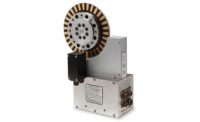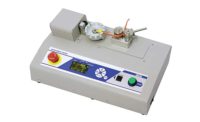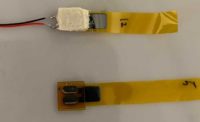The great irony of our technological age is this: Electronic devices are getting smaller and smaller, but their functionality is increasing more and more.
This poses a significant challenge to electronics engineers, who must design reliable and intuitive control elements for these devices, as well as manufacturing engineers, who must ensure these products meet the highest possible quality standards.
Consider two examples: smartphones and automotive dashboards. Smartphones are our daily companions. Despite their compact and minimalistic designs, they offer high functionality. The same is true for dashboards. Granted, a dashboard is much bigger than a smartphone. Even so, modern dashboards feature an increasing number of displays and control elements with a wide variety of functions in a much smaller footprint. In both devices, haptics—the science of touch—plays a key role in ensuring successful operation and, ultimately, customer satisfaction.
The central element of a typical smartphone is the “home” button, which users employ to navigate through menus in a targeted and reliable way. Because there’s not a lot of real estate on a smartphone, the home button must be capable of executing multiple functions. One click might close an application. A double-click might open a new menu, while pressing and holding the button might launch a different function.
Similarly, drivers can activate myriad functions from a dashboard touchscreen—everything from climate control to guidance systems. One newer function is an electronic parking brake. Instead of pushing a pedal or pulling a lever to actuate the brake, the driver simply presses a digital button on a touchscreen. However, whereas a pedal or lever provides instant audible and tactile feedback that the brake has been engaged, pressing a touchscreen offers no such assurances. The driver must be able to trust that the system is working at all times.
In both cases, the malfunctioning of one small switch can easily result in economically damaging consequences for the manufacturer. For example, the technology giant Apple Inc. recently had to replace the “sleep-wake” button mechanism on some iPhone 5 models after a defect was detected.
It’s a Matter of Feel
When it comes to a satisfactory user experience, the haptics related to the activation of a device can be just as important as its functionality. The feeling of a product during use must meet the consumer’s expectations. It is not enough for a smartphone’s home button to simply operate properly—it must also signal to the user that it was successfully activated. That feeling comes as the result of haptic feedback, whether it’s a tactile, audible or visible response. This feedback tells the user that the functionality has been engaged.
It’s the same with a vehicle. Even though a vehicle may contain components from multiple suppliers, the driver still expects that all switches and mechanisms can be operated uniformly and that the effort needed to activate them will meet expectations. In fact, varying levels of effort can even help the driver identify the switch being activated. For example, it usually requires greater physical effort to operate the parking brake of a vehicle or to turn on the hazard lights than it does to activate the electric window or windshield wiper control.
Since anyone who activates a switch expects that the desired effect will follow, haptic and functionality testing are critical to customer satisfaction. Only a thorough check of each switch by the manufacturer can ensure that substandard or faulty parts are rejected at an early stage. During such testing, a sensor is used to measure the effort needed to activate the switch. A “good” or “bad” assessment is made based on a plot of force vs. distance.
To ensure precise measurement and exclude measuring inaccuracies (for example, due to bending moments), the force application area at the sensor—and therefore the sensor itself—should be as small as possible. The size of the sensor is also important to the overall design of the automated test system. In most cases, there’s just not that much space available for the sensor to be installed.
High Performance Sensors
To meet the demands for testing ever-smaller switches and touchscreens, force sensors must be small enough to test buttons that are very close to each other. Accuracy and repeatability are vital. They also need protection against overload. Sensors that cannot resist a higher-than-expected load (as when a component is incorrectly inserted) could be damaged. Finally, they need to have a wide measuring range. While it doesn’t take much force to activate a button or touchscreen, the spread is wider than you might think, ranging from 0.1 to 500 newtons.
Miniature piezoelectric force sensors meet these requirements. These tiny instruments can take very precise measurements with the smallest force application areas. They offer excellent repeatability and high resolution, even when testing switches and keys. At the same time, the sensors are robust, durable and protected from overload.
The smallest such force sensor is 6.1 millimeters in diameter and 23.3 millimeters tall, but can measure forces from -20 to 200 newtons.
Piezoelectric sensors provide a superior price-to-performance ratio compared with strain-gauge technology. The latter must be integrated into the production line using adapters, while piezoelectric force sensors can be installed on a mounting plate directly through an external thread. Complicated and expensive recording elements are not required. In addition, this type of mounting makes it possible to arrange several sensors in tight spaces, making it possible to test a closely arranged row of keys in sequence.
The future is getting smaller. However, thanks to a new generation of highly developed electronic helpers, manufacturers are in a position to establish new standards even for the smallest applications.





